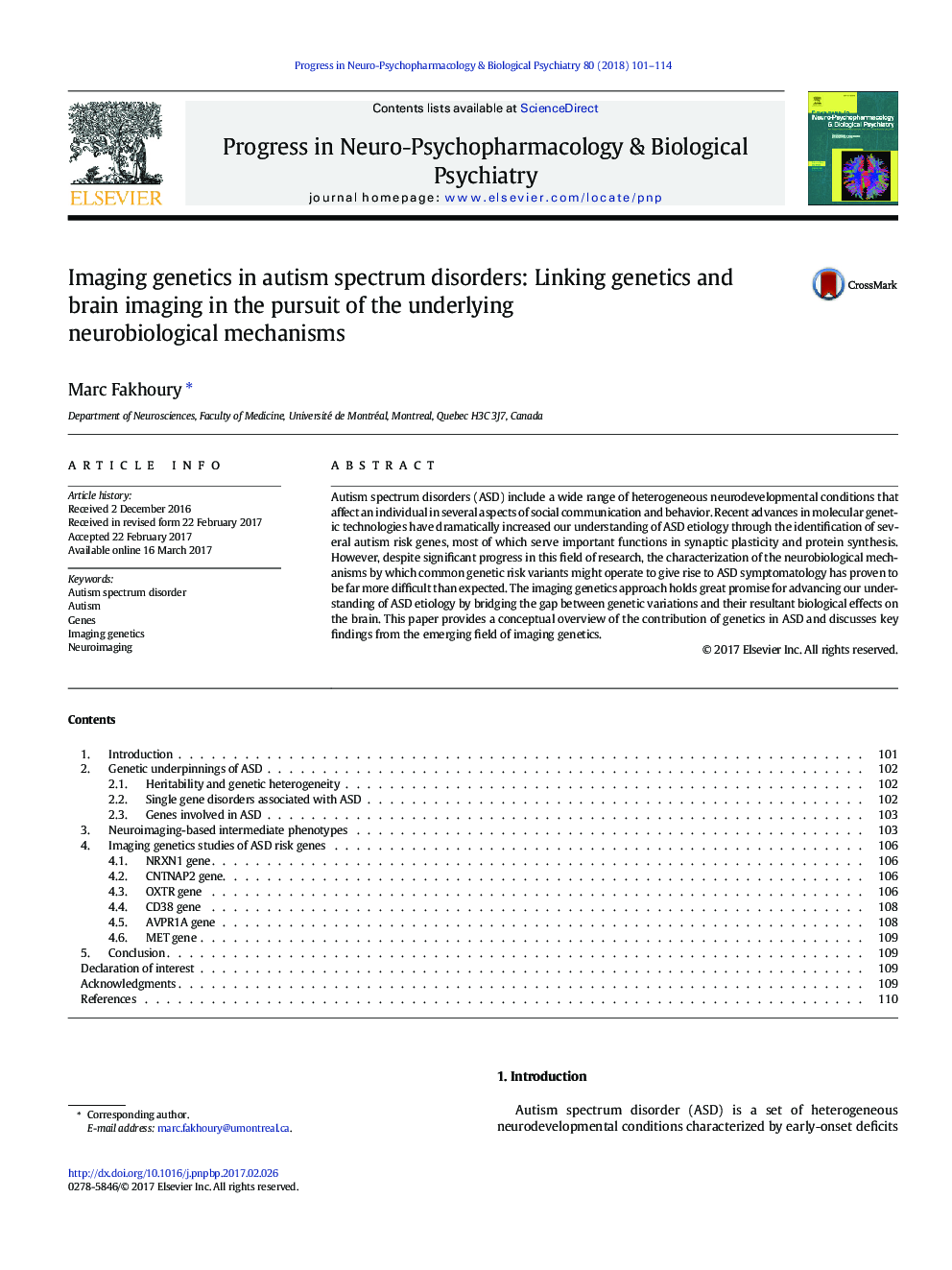| Article ID | Journal | Published Year | Pages | File Type |
|---|---|---|---|---|
| 5557897 | Progress in Neuro-Psychopharmacology and Biological Psychiatry | 2018 | 14 Pages |
â¢ASD is a neurodevelopmental condition with strong yet complex genetic architectureâ¢Imaging genetics can be used to characterize the neural effects of putative risk genesâ¢ASD risk genes are associated with structural and functional alterations in specific brain circuits
Autism spectrum disorders (ASD) include a wide range of heterogeneous neurodevelopmental conditions that affect an individual in several aspects of social communication and behavior. Recent advances in molecular genetic technologies have dramatically increased our understanding of ASD etiology through the identification of several autism risk genes, most of which serve important functions in synaptic plasticity and protein synthesis. However, despite significant progress in this field of research, the characterization of the neurobiological mechanisms by which common genetic risk variants might operate to give rise to ASD symptomatology has proven to be far more difficult than expected. The imaging genetics approach holds great promise for advancing our understanding of ASD etiology by bridging the gap between genetic variations and their resultant biological effects on the brain. This paper provides a conceptual overview of the contribution of genetics in ASD and discusses key findings from the emerging field of imaging genetics.
